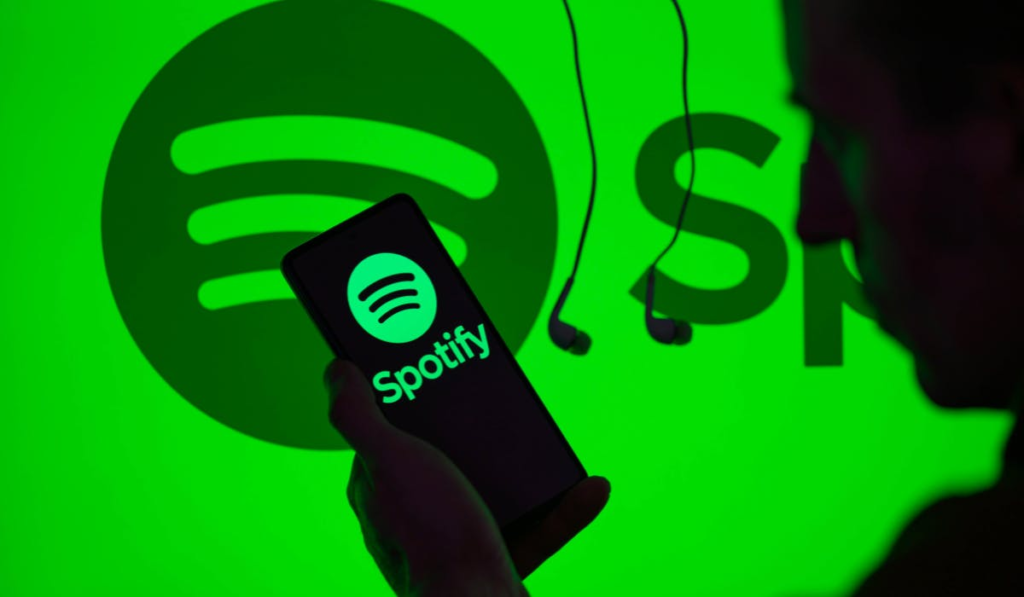
Spotify CEO Daniel Ek has called out short-termism and reaffirmed the brand’s commitment to long-term marketing investment after the streaming giant missed revenue growth expectations in Q2.
During the company’s Q2 earnings call today (29 July), Ek told investors Spotify doesn’t aim to “optimise for reaching an arbitrary goal”, but instead prioritises driving its lifetime value (LTV) metric.
“Lifetime value is such a powerful metric because it inherently captures the balance and trade-offs between chasing short-term opportunities and driving long-term strategic initiatives,” he said. “It really acknowledges that not every decision will yield immediate returns and that our progress is not always linear.”
 Spotify CEO Daniel Ek has called out short-termism and reaffirmed the brand’s commitment to long-term marketing investment after the streaming giant missed revenue growth expectations in Q2.
Spotify CEO Daniel Ek has called out short-termism and reaffirmed the brand’s commitment to long-term marketing investment after the streaming giant missed revenue growth expectations in Q2.
During the company’s Q2 earnings call today (29 July), Ek told investors Spotify doesn’t aim to “optimise for reaching an arbitrary goal”, but instead prioritises driving its lifetime value (LTV) metric.
“Lifetime value is such a powerful metric because it inherently captures the balance and trade-offs between chasing short-term opportunities and driving long-term strategic initiatives,” he said. “It really acknowledges that not every decision will yield immediate returns and that our progress is not always linear.”
Ek pointed to marketing as an example of where the company resists sacrificing long-term value for short-term wins. He said Spotify evaluates marketing through a subscriber acquisition cost (SAC) to LTV ratio.
“Let’s hypothetically say that it would go to five to one, meaning, for every dollar we invest in marketing, we get five back,” he said. “If you’re an investor, you should feel very happy for us to invest, regardless of whether that means that we will have short-term impacts on expenses if you have a high degree of certainty that we were actually going to get five back.”
EK added that as more advertising becomes programmatic, there are times when brands pull back, marketing prices fall and efficiency rises.
“That might mean that even though we generally are trying to become more efficient. We may see in certain quarters where it makes a lot of sense for us to even double or triple our marketing,” he said.
However, the Spotify CEO cautioned those spikes are rare: “Those will be very unlikely scenarios and don’t happen very often, but it could happen, and I want you as investors to be prepared that we will always do what we think is right for the long-term business.”
The comments come as Spotify reported Q2 revenue of €4.19bn (£3.62bn) for the three months ending 30 June, up from €3.81bn (£3.29bn) the previous year, but below analysts’ €4.27bn (£3.69bn) forecast.
The company reported a net loss of €86m (£74m) for the three months to the end of June, down from a profit of €274m (£237m) in the same period last year.
Meanwhile, Spotify increased sales and marketing spend to €364m from €314m in Q1. Paying subscribers rose 12% year-on-year to 276 million, while monthly active users hit 696 million.
Ads business
Ek acknowledged weaker-than-expected ad performance, with ad-supported revenue down 1% year-on-year to €453m (£391m).
“The one area that hasn’t yet met our expectations is our ads business. We’ve simply been moving too slowly and it’s taken longer than expected to see the improvements we initiated to take hold. It’s really an execution challenge, not a problem with the strategy,” Ek said.
Earlier this year, Spotify introduced new ad tools, including programmatic and generative AI formats, which it claimed have been used by 1,500 advertisers to create over 7,000 audio ads across the US and Canada.
“2025 is a year of transformation for the business,” said chief business officer Alex Norström.
“The best proxy that I can see whether it’s going well or according to plan or not is the adoption from advertisers. And we see all these tools that we’ve built have been adopted by advertisers.”
Spotify also highlighted its emphasis on video, with the company now boasting 430,000 video podcasts. This video offering continues to “outperform”, with consumption growing 20 times faster than audio-only consumption since 2024, the business claimed.


